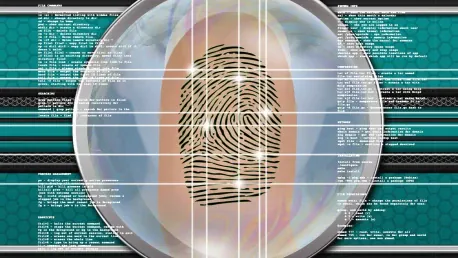Biometric technology is revolutionizing the way we approach security and digital services. The need for robust and efficient authentication methods has never been more pressing as cyber threats escalate and digital transactions proliferate. As we dive into the impact of this innovative technology, we’ll explore its various facets and the transformative potential across multiple sectors.
The Rise of Biometric Authentication
Addressing Security Concerns
In an era characterized by increasing identity theft, fraud, and unauthorized access, biometric technology offers a significant leap forward in securing digital and physical spaces. Unlike traditional password systems vulnerable to breaches, biometrics provides a higher precision level, making it a preferred choice for authentication. With human error being a major contributor to 88% of data breaches, the shift towards biometrics is not only timely but also necessary for ensuring robust security measures.
Biometric technologies such as fingerprint, facial, iris, voice, and vein recognition have demonstrated their superiority in accuracy and reliability. The average cost of data breaches hitting new highs, such as USD 4.88 million in 2024, underscores the crucial need for advanced security solutions. Furthermore, with the average ransomware payout reaching USD 1.54 million in 2023 and 75% of businesses experiencing at least one attack, the effectiveness of biometric systems becomes even more evident. These technologies offer a compelling alternative to traditional security measures, combining precision with user-friendly authentication processes.
Application in Various Sectors
The adoption of biometric systems spans across several key industries, each leveraging the technology to address unique security challenges. Government agencies use biometrics for secure identification and access control, ensuring that only authorized personnel have access to sensitive areas and information. In the banking sector, biometric authentication serves as a robust measure for customer verification, significantly reducing the risk of identity fraud and enhancing transaction security.
Healthcare organizations also benefit from biometric technology, using it to secure patient records and ensure compliance with stringent privacy regulations. Biometric systems help safeguard personal health information, providing a secure and efficient way to manage access to medical data. This integration of biometrics across different sectors highlights its versatility and effectiveness in enhancing security and streamlining operations.
Types of Biometric Systems
Fingerprint Recognition
Among the various types of biometric systems, fingerprint recognition stands out due to its widespread acceptance and reliability. The technology’s ease of use and proven effectiveness have made it a staple in numerous applications, from personal devices like smartphones to workplace access control systems. The fingerprint recognition segment captured a substantial market share, reflecting its dominance and broad application in securing everyday transactions and physical spaces.
The popularity of fingerprint recognition can be attributed to its longstanding presence and continuous advancements. It offers a quick and reliable method of authentication, essential for environments where time and accuracy are critical. Moreover, the technology’s integration into consumer electronics, such as smartphones and laptops, has familiarized the general public with its use, further driving its adoption.
Facial and Iris Recognition
Facial recognition technology is another robust solution within the biometric spectrum, offering unparalleled accuracy and speed. This technology is increasingly being used in high-security environments such as border control, airports, and even financial institutions for customer verification. The ability of facial recognition systems to quickly identify individuals in real-time makes them invaluable for surveillance and security purposes.
Iris recognition, though less common than fingerprint or facial recognition, provides an even higher accuracy level, making it suitable for high-security applications. The unique patterns in the iris are extremely difficult to replicate, making this technology one of the most secure biometric methods available. It is often used in environments that require stringent security measures, such as military installations and sensitive corporate facilities.
Integration with AI and Machine Learning
Enhancing Accuracy and Speed
The integration of biometric systems with artificial intelligence (AI) and machine learning (ML) has significantly enhanced their performance, making authentication processes faster and more reliable. AI algorithms can process biometric data more efficiently, reducing the chances of false positives and negatives, which is critical for maintaining security integrity. This integration results in quicker authentication processes, essential for applications that require immediate access, such as financial services and emergency response systems.
Machine learning, in particular, allows biometric systems to improve over time by learning from previous data and user interactions. This continuous improvement increases the system’s accuracy and reliability, ensuring that it adapts to new security threats and user behaviors. The combination of AI and ML with biometric technology represents a significant advancement in the field of security, offering a proactive approach to threat detection and mitigation.
Real-World Applications
AI-driven biometric solutions are being deployed in various real-world scenarios, showcasing their practical applications and benefits. For instance, NEC Corporation’s NeoFace facial recognition software is designed for large-scale security applications, indicating a move towards smarter, more efficient security infrastructure. This software is capable of processing large volumes of data quickly and accurately, making it ideal for use in busy environments such as airports and public transportation hubs.
Similarly, Thales Group’s AI-enhanced biometric card demonstrates the fusion of AI with fingerprint technology, improving user authentication and reducing fraud risks. The card combines traditional fingerprint recognition with AI algorithms that analyze the authenticity of the fingerprint in real-time, providing a more secure and user-friendly solution. These innovations highlight the ongoing commitment of leading companies to develop cutting-edge biometric technologies that address evolving security needs.
Market Growth and Future Trends
Regional Insights
North America leads the biometric technology market due to high demand in industries like banking, government, and healthcare, driven by the region’s stringent data privacy laws. These regulations necessitate the adoption of advanced security systems to protect sensitive information and ensure compliance. The prevalence of biometric access control systems in government buildings and secure banking services underscores the technology’s critical role in safeguarding high-risk areas.
Conversely, the Asia-Pacific region is poised for rapid growth from 2024 to 2032, fueled by large-scale government initiatives such as India’s Aadhaar program. This program aims to provide citizens with secure digital identities, facilitating access to various services while enhancing security. The region’s burgeoning e-commerce and online banking sectors also drive the demand for biometric authentication solutions, reflecting a broader trend towards digital transformation.
Multimodal Biometric Solutions
A growing trend in the biometric industry is the adoption of multimodal solutions that use two or more biometric traits for authentication. These systems offer enhanced security by reducing the risk of spoofing and are increasingly favored in high-security environments. By combining different biometric modalities, such as fingerprint and facial recognition, multimodal systems provide an added layer of security, making it more challenging for unauthorized individuals to bypass.
Multimodal biometric solutions are also critical in smart city projects, where they provide secure access to public services and help manage urban safety through advanced surveillance systems. These technologies enable authorities to offer citizens seamless and secure interactions with public infrastructure, from transportation to healthcare services. As cities become more interconnected and reliant on digital technologies, the demand for comprehensive biometric solutions is expected to rise.
Biometrics in Digital Transactions
E-commerce and Online Banking
As e-commerce and online banking become ubiquitous, the need for secure customer authentication has surged. Biometric systems offer a robust solution by replacing easily compromised passwords with unique biological identifiers. This transition not only ensures security but also enhances user experience by providing seamless and quick access. The rise of contactless payments and the increasing reliance on digital financial services further underscore the importance of robust biometric authentication.
Biometric authentication methods like fingerprint and facial recognition are being integrated into mobile banking apps and e-commerce platforms, simplifying the verification process. Customers can now use their smartphones to securely authenticate transactions, reducing the risk of fraud and ensuring the integrity of their financial activities. This seamless integration of biometrics into digital services marks a significant advancement in user experience and security.
Ransomware and Phishing Protection
Biometrics are increasingly vital in protecting against threats like ransomware and phishing. With an average ransomware payout hitting USD 1.54 million in 2023 and phishing targeting 57% of companies, implementing biometrics can significantly mitigate these risks. The biometric systems’ inherent complexity makes them difficult to bypass, providing a strong defense against cyber threats. This makes biometrics an essential component of comprehensive cybersecurity strategies.
By leveraging biometric authentication, organizations can ensure that access to critical systems and data is tightly controlled, limiting the potential for unauthorized access. This is particularly important in sectors such as finance and healthcare, where the consequences of a security breach can be severe. As cyber threats become more sophisticated, the role of biometrics in safeguarding digital assets will only continue to grow.
Biometric Systems in Smart Cities
Role in Urban Safety
In smart city initiatives, biometric systems play a crucial role in maintaining urban safety. Surveillance systems equipped with facial recognition can monitor public spaces, helping law enforcement agencies quickly identify and respond to potential threats. This technology ensures the city’s security infrastructure is proactive and efficient, capable of preventing incidents before they escalate. The integration of biometrics in urban planning represents a move towards smarter and more secure cities.
Biometric systems also enable more efficient management of public resources and services. For example, municipal authorities can use biometric data to streamline access to public transportation, ensuring that only authorized users can utilize these services. By enhancing the security and efficiency of urban services, biometrics contribute to the overall quality of life for city residents, fostering safer and more responsive communities.
Access to Public Services
Biometric technology also improves access to public services by providing a secure and efficient way to verify identities. For example, biometric identification can streamline processes like public transport, healthcare access, and government services, ensuring citizens receive timely and efficient services without compromising security. The use of biometrics in these applications helps reduce fraud, improve service delivery, and enhance overall public trust in government institutions.
In healthcare, biometric systems can ensure that patient information is accurately and securely managed, reducing the risk of medical errors and enhancing patient care. In public transport, biometrics can facilitate seamless and secure access to various modes of transportation, improving the user experience while ensuring security. These practical applications demonstrate the transformative potential of biometric technology in enhancing public service efficiency and effectiveness.
Leading Players and Innovators
Notable Companies
Key players in the biometric market include Apple Inc., Samsung Electronics, Thales Group, NEC Corporation, and more. These companies are at the forefront, continually innovating and refining biometric technologies to enhance security and usability across various applications. Their contributions have been instrumental in driving the adoption and development of advanced biometric solutions, ensuring that the technology meets the evolving needs of diverse industries.
These leading companies invest heavily in research and development to stay ahead of emerging threats and capitalize on new opportunities. By collaborating with various stakeholders, including governments, financial institutions, and healthcare providers, they ensure their solutions are tailored to address specific security challenges. This collaborative approach fosters innovation and drives the continuous improvement of biometric technologies.
Recent Developments
Recent advancements such as NEC’s NeoFace software and Thales Group’s AI-enhanced biometric card illustrate the ongoing evolution in this space. These innovations highlight the commitment of leading companies to provide cutting-edge security solutions that meet the growing demands of a digital world. NEC’s NeoFace software, for instance, is designed to offer enhanced accuracy and speed, suitable for large-scale security applications in busy environments like airports and public spaces.
Thales Group’s AI-enhanced biometric card exemplifies the fusion of AI with traditional biometric methods, providing a more secure and user-friendly authentication experience. These technological advancements not only enhance security but also improve the overall user experience, making biometric authentication more accessible and reliable. Continuing innovation in this field will ensure that biometric technology remains a cornerstone of modern security solutions.
Future Trends and Recommendations
Embracing the Future
Biometric technology is drastically changing how we handle security and digital services. With cyber threats on the rise and digital transactions becoming more common, the need for strong and efficient authentication methods has never been greater. This innovative technology offers various features that provide secure, seamless user experiences, which are essential in our increasingly digital world.
Biometric systems use unique biological traits, such as fingerprints, facial recognition, or iris scans, to verify identity. These methods are not only more secure but also more convenient than traditional passwords or PINs, which can be forgotten, lost, or stolen. As a result, biometric authentication is becoming a popular choice for both consumers and businesses.
The application of biometric technology spans multiple sectors, from banking and finance to healthcare, government, and even everyday personal devices. For example, many smartphones now use fingerprint or facial recognition to unlock, adding an extra layer of security. In the banking sector, biometric authentication helps prevent fraud and protect sensitive financial data. In healthcare, it ensures secure access to patients’ medical records.
By integrating biometric technology, businesses and service providers can enhance security, improve user experience, and build trust with their customers. As the digital landscape evolves, the impact of this technology will continue to grow, offering new opportunities and challenges in the realms of security and digital services.









